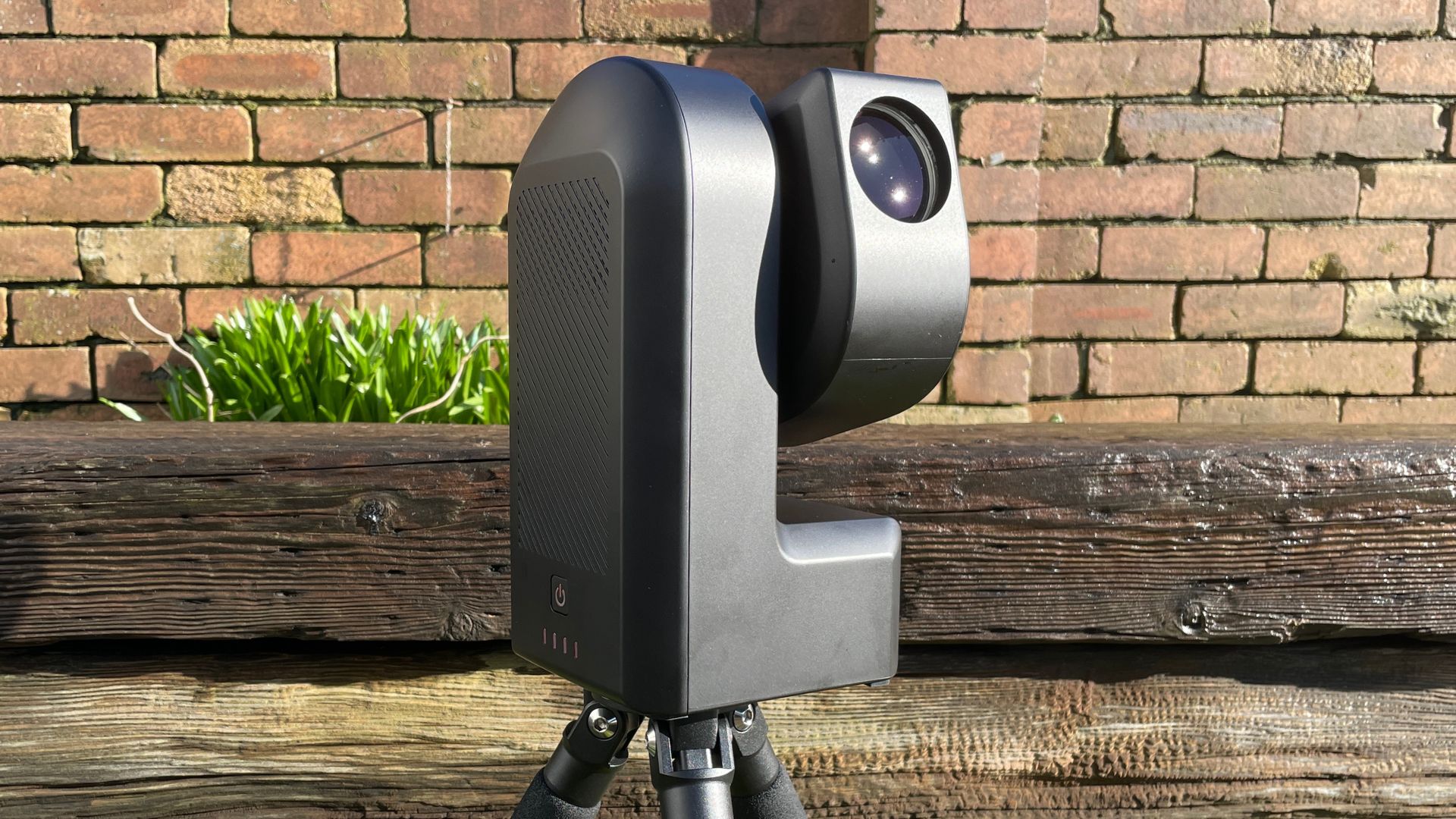
Smart telescopes have only been around for a few years, but until the Seestar arrived, they were a high-end purchase for early adopters. Now, everyone can afford a smart telescope, thanks to the Seestar, which has become a word-of-mouth hit that threatens to trouble the best telescopes for astrophotography in 2024. Sold out in advance of April 8’s total solar eclipse in the USA, it can take images of both the sun and moon, and deep sky targets.
Is it the best smart telescope in 2024? It’s not. Smart telescopes are available with better optics, costing many times the asking price of the Seestar, such as the Unistellar eVscope 2 and Vaonis Vespera. However, there’s no doubt that the Seestar is by far the best-value smart telescope around.
That said, its optics are limited. Its 2 inches/50mm aperture suggests a wide-angle view of the night sky, but its Sony IMX462 image sensor – which reaches only HD quality – is so small that it actually has a narrow field of view. It also lacks high-end features. For example, there are no audio descriptions for the astronomical objects you observe, as you’ll find on most GoTo telescopes. Nor is there a citizen science option, as seen on other smart telescopes.
Seestar comes from the Chinese manufacturer ZWO, which also makes high-speed and high-sensitivity astronomy cameras, telescopes, and other accessories for serious astronomy.
Is this the smart telescope that grows the market for a new kind of smartphone-operated, astrophotography-centric telescope? Absolutely, and, in fact, it already has. Who needs an eyepiece?
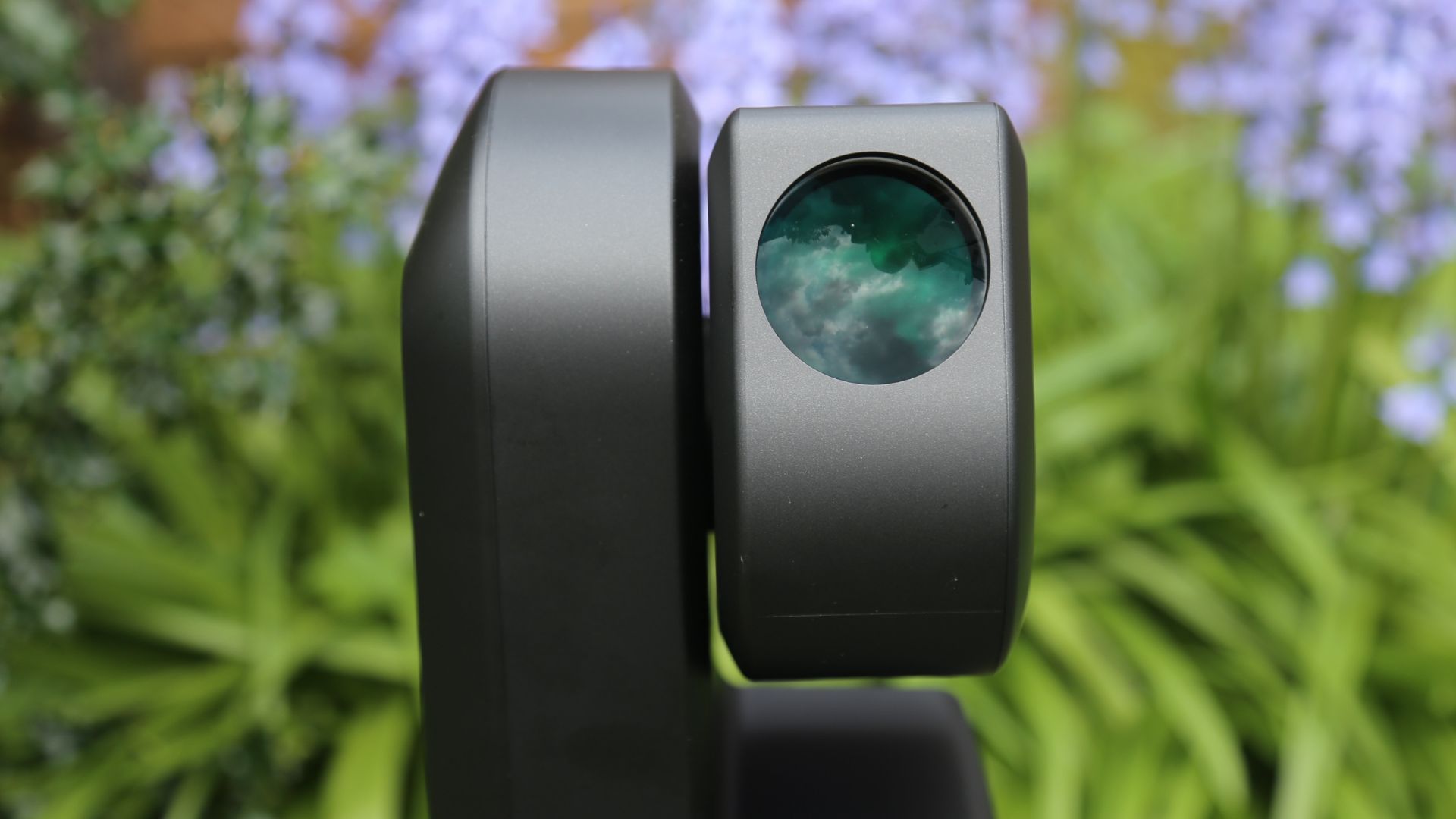
ZWO Seestar S50: Specifications
ZWO Seestar S50: Price
That ZWO is asking just $499 / £539 / AU$949 for the Seestar makes this a revolutionary product in the smart telescope market. It’s also been a huge reason for its success, with demand so high that at times Seestar has been difficult to get hold of. For context, the next most affordable smart telescope is the Vaonis Vespera II (the 2024 successor to the original Vaonis Vespera), which sells for $1,590 / £1,370.
Despite its low price, Seestar has a carry case, a tripod, a USB-C cable, and a solar filter.
ZWO Seestar S50: Design & Handling
Seestar is small and lightweight. At just 2.5 kg, it weighs about the same as a house brick, seven cans of beans, or half a cat. That hugely changes how this product is used because it can be easily put in a backpack or placed on a bookshelf. I’ve seen people store it in a cupboard in a campervan, ready to be brought outside on any clear night.

Its designers presumably foresaw this, providing L-shaped rubber pads on the underside corners to prevent scratches and slippage. Placed lowdown on one corner is the all-important USB-C slot for recharging, while on the back is the on/off switch along with four LEDs to let you know the battery status. There is no lens cap; the Seastar’s motorized arm parks itself while pointing downwards, thereby protecting the lens.
On the undercarriage is a 3/8-inch tripod thread. Any photographic tripod can, therefore, be used to mount the Seestar, but an excellent-quality small two-section carbon fiber tripod is included.
Although the (lack of) weight is useful when traveling, it does at least suggest that the Seestar won’t last as long as the more expensive – and far heavier – smart telescopes available. We’re also wary about it easily getting damaged through wear and tear. For now, the build quality seems good enough, particularly given its meager price.
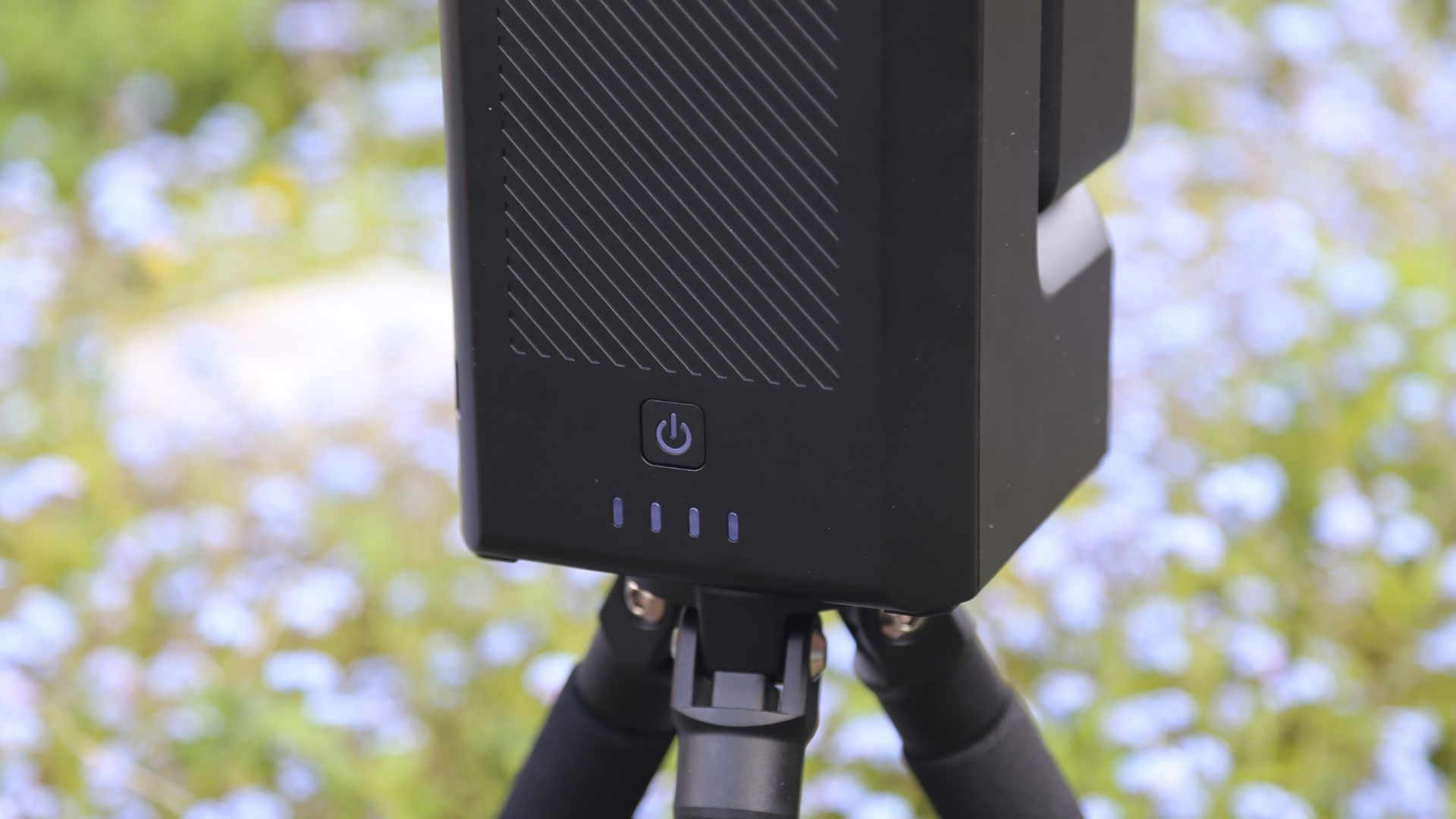
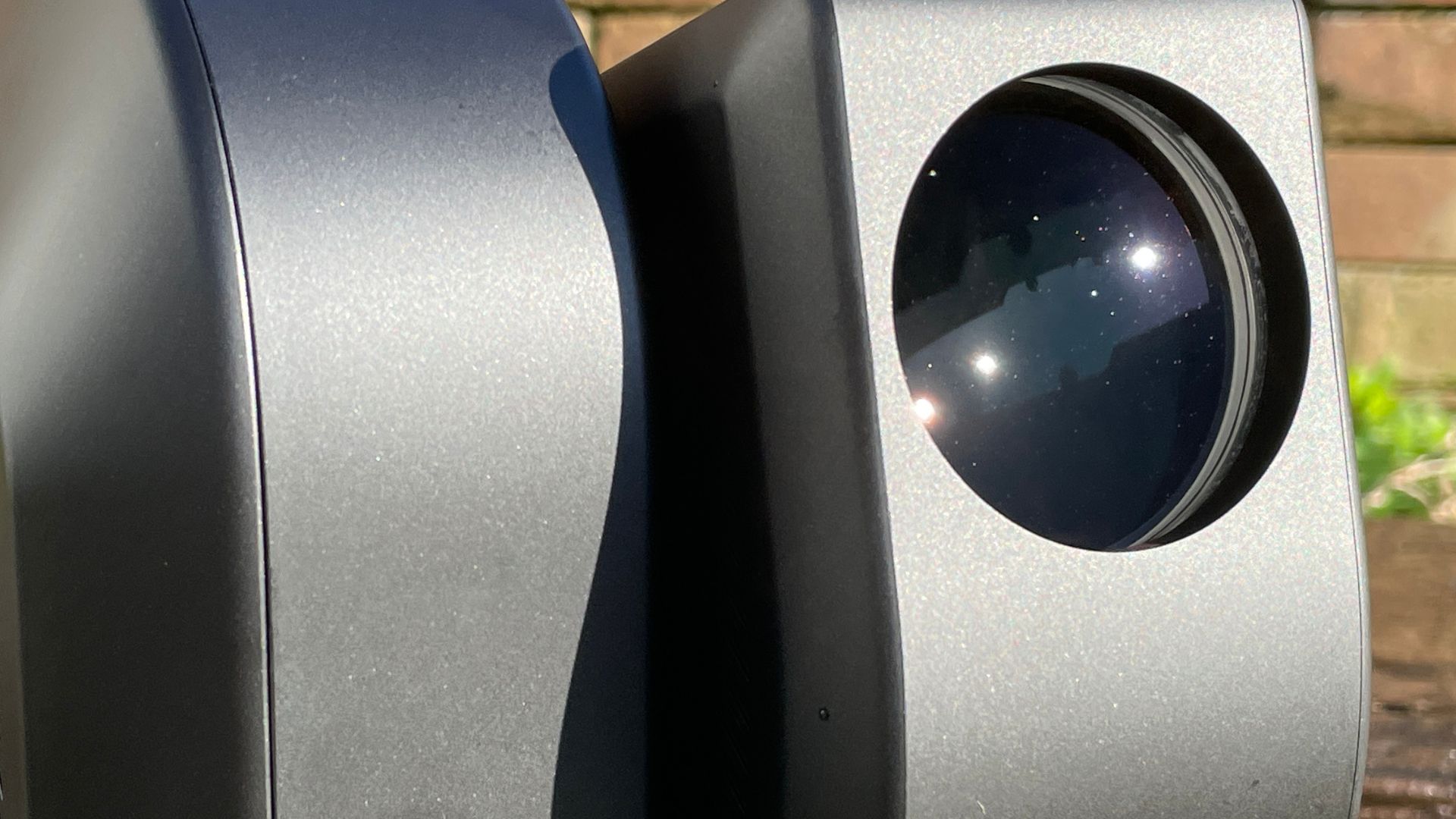
ZWO Seestar S50: Performance
Whether you're interested in capturing long-exposure images of deep sky objects, observing sunspots on our nearest star, or capturing the moon, the Seestar has you covered. The only thing it doesn't impress with is the planets.
Core to the Seestar is its app, which is mostly intuitive and user-friendly. After a simple, quick set-up that involves leveling the tripod and the software plate-solving images of the stars to sync with the night sky, it slews to whatever target you choose in its built-in Sky Atlas planetarium software. You virtually compose the shot and then let the Seestar slew to it and begin taking 10-second images. The built-in light pollution filters work well on this setting, though 20-second and 30-second options are also available. It then live-stacks the image, which gets better over time. Faint objects, such as galaxies and nebula, are best left for over 30 minutes, while other, brighter objects max out after just a few minutes. You can even save each frame, post-process them and stack them yourself, which will appeal to budding astrophotographers with time on their hands.
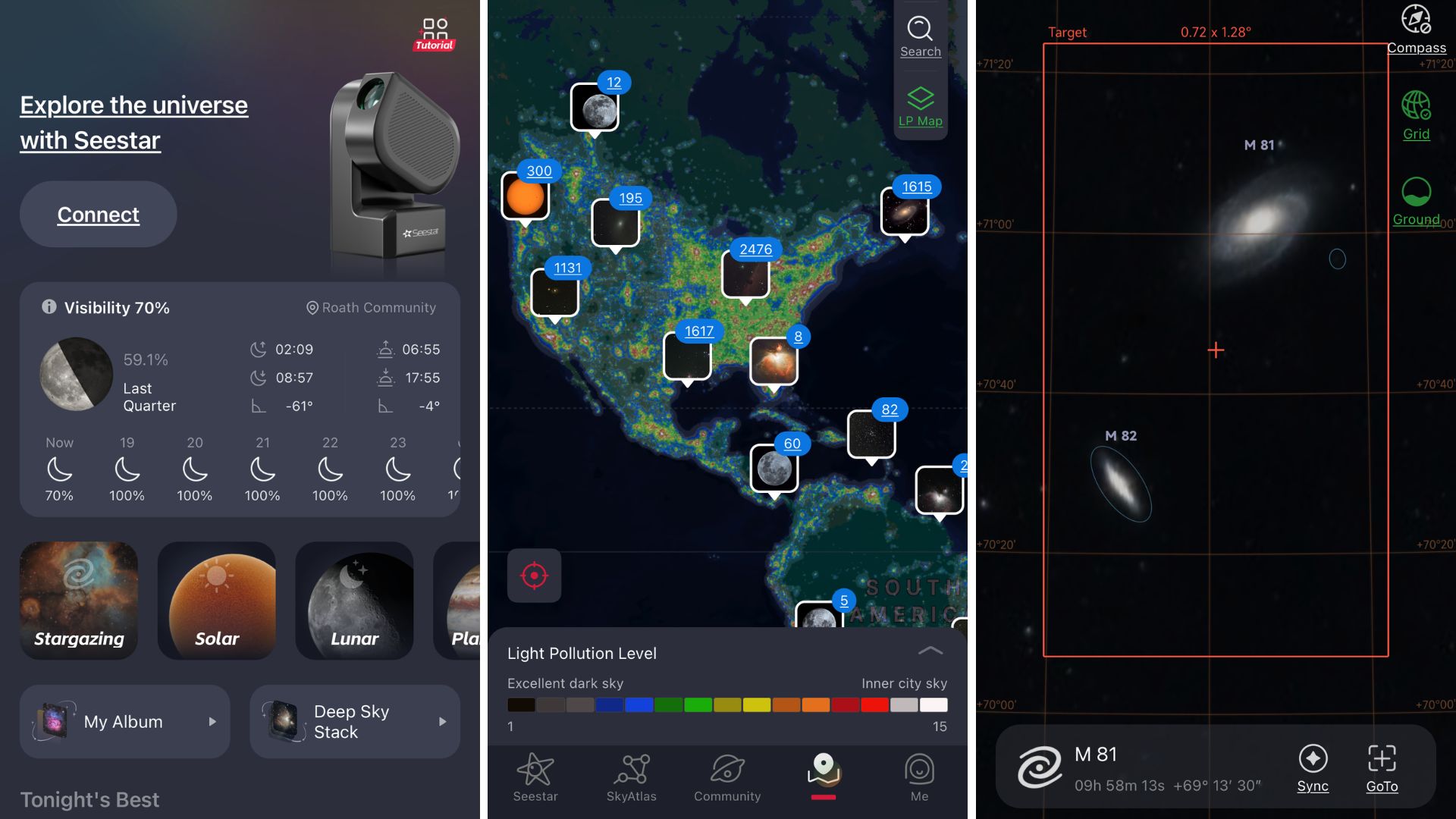
It’s possible to return to an object at any time – even weeks or months later – to shoot more images of an object to add to your composite. It might make sense if you take Seestar to a particularly dark site. It’s problematic because the Seestar uses an alt-az mount, so the sensor’s rectangular composition twists, leading to blurred stars in the corners. In practice, that makes no difference to most small targets, only large frame-filling targets (such as the Andromeda galaxy).
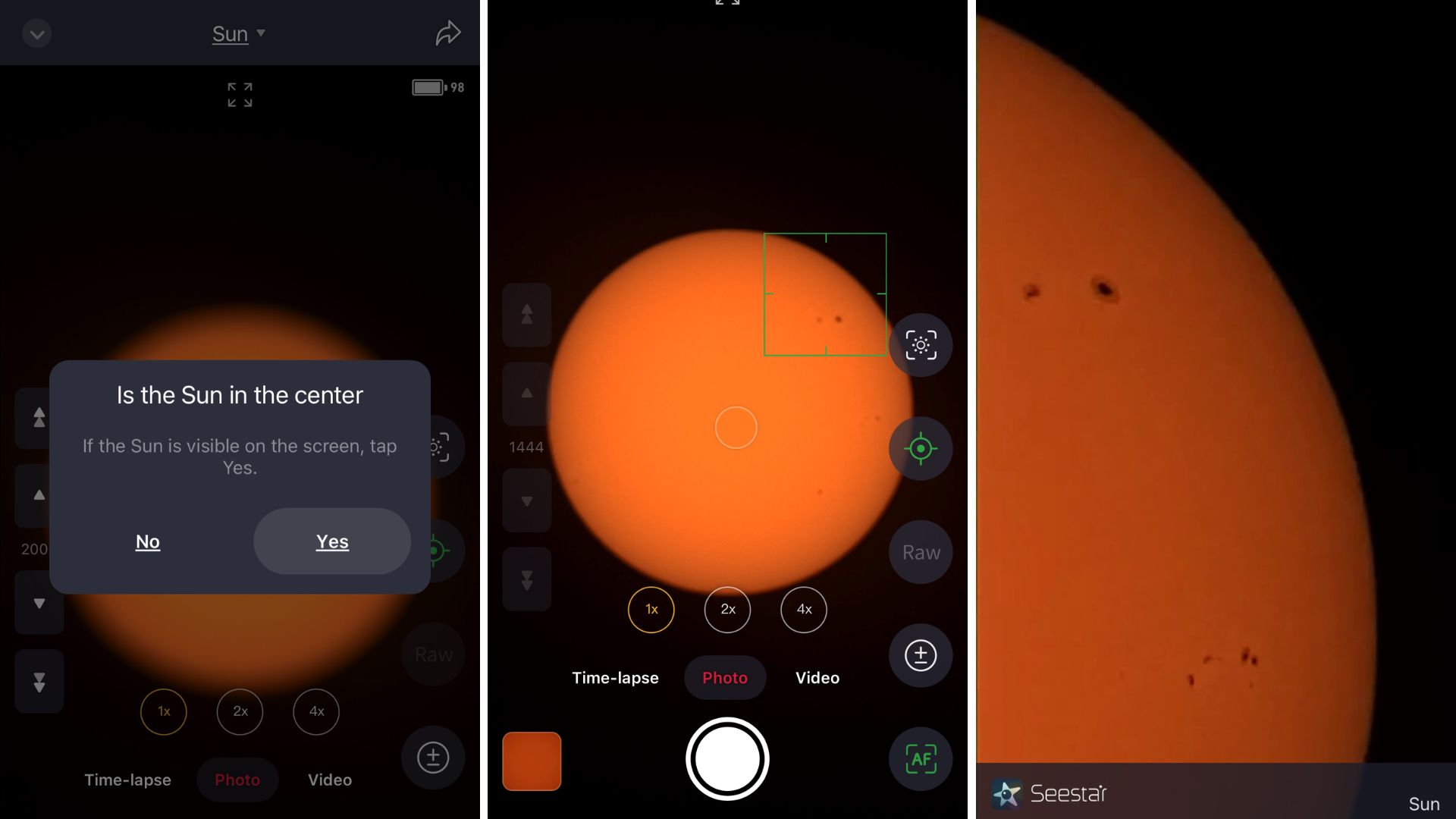
The main drawbacks are that the Seestar captures in 2-megapixel resolution and portrait mode only, the latter unexpected and limiting. These are less of an issue for the sun and moon, which the Seestar excels at. Usually finding its targets easily – unless there are clouds – the moon is shown with impressive sharpness, while the sun, with the included solar filter in place, displays plenty of sunspots. On all targets, its electronic autofocus works well.
As a bonus, the Seestar S50 can take some rather impressive images in daylight. It has a virtual directional keypad to move it into position, but once you've found your target, the auto-focus produces very sharp, balanced images (though you can manually tweak the brightness).
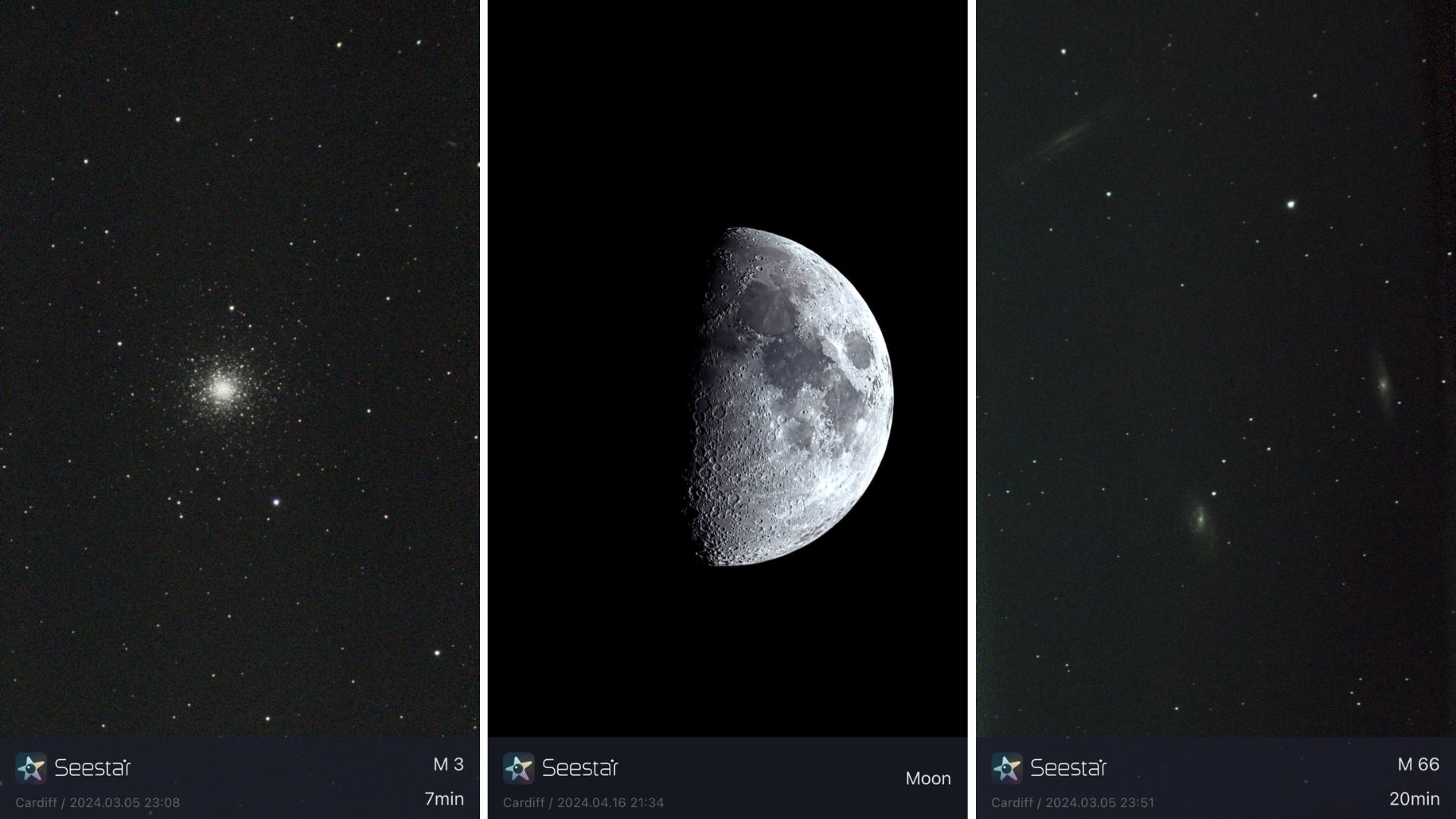
ZWO Seestar S50: Verdict
Though it may not boast the highest resolution and comes with a few technical limitations, the Seestar makes up for them in affordability, ease of use, and sheer enjoyment. A casual device that’s hugely affordable, relatively speaking, it’s the perfect introduction to astronomy and astrophotography, particularly in light-polluted cities, because it will show you things you will never, ever see with any other kind of telescope. It’s not the best smart telescope around, but it’s definitely the most popular.
✅ Buy this if...
- It’s the most affordable smart telescope available.
- It performs so well with the sun and moon.
🚫 Don't buy this if...
- It’s the lowest-resolution smart telescope available.
- Its basic build quality may affect its longevity.







